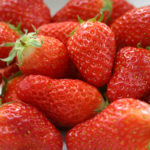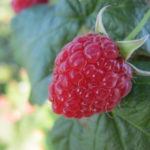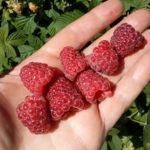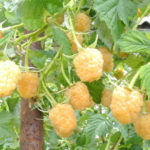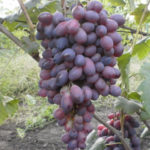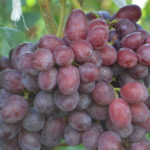Grape variety Bogatyanovsky
Bogatyanovskiy is a relatively new, but quickly became popular, table grape variety. Its author, as is often the case in recent decades, was not a team of researchers from any industry research institute, but an amateur breeder, a legend of domestic viticulture - Viktor Krainov. Here, in fairness, it is worth noting that Viktor Nikolaevich received all his numerous hybrids with the methodological support of the famous scientist Ivan Kostrikin, but this fact does not detract from the merits of the folk breeder, who made many crossings with his own hands and raised thousands of seedlings, from which he selected dozens of excellent characteristics of new varieties of grapes. Many of them later passed state variety testing and became officially recognized varieties.
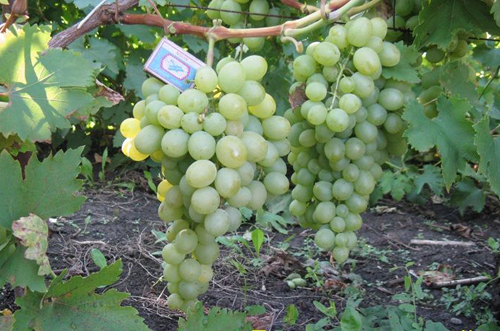
Bogatyanovsky is one of such brainchildren of Krainov. He was born in the early 2000s as a result of pollination of the flowers of the most popular among amateur breeders Mascot pollen of the famous Radiant kishmish... This parental couple can be considered the author's favorite, since it is from her that most of his popular new products originated. At the same time, unlike his "brothers" and "sisters", who most often had pink berries, our hero received a light color of the fruit. Compensation for this was its stunning large-fruit size, thanks to which the presentation and attractiveness of the crop were appreciated by winegrowers.
In a few years, the variety became widespread among amateurs and growers, and in 2015 it was included in the State Register of Breeding Achievements of the Russian Federation and zoned in all regions of the country for horticultural use. In addition to the aesthetic qualities of the fruit, these grapes are distinguished by excellent taste, excellent yield and good resistance to unfavorable growing conditions.
Agrobiological characteristics
The bushes are highly vigorous. The crown is yellowish-green, not pubescent, reddish dots are visible on the young leaves along the edges of the denticles. A standard leaf grows medium in size, as a rule, it is three-lobed, strongly dissected, with a rich green color. Its upper side is deeply wrinkled, with bristly pubescence on the back. The edges of the blades are raised to the top. The lateral notches are deep, open, lyre-shaped with a rounded bottom, or slit-like with parallel sides. The petiole notch is also lyre-shaped, but with a sharp bottom, sometimes closed with a narrow elliptical lumen. Petioles are long, green, often with red longitudinal stripes. The teeth along the perimeter of the lamina are rather large, triangular with convex edges and pointed apices. Thanks to the bisexual flowers, there are no problems with pollination of grapes, and the berries are not peeled. The one-year growth matures in due measure, for a significant part of its length. The ripe vine turns brown.

Bogatyanovsky's clusters are very large, conical, of moderate density. Their average weight is 800-1100 grams, some grow up to 2 kg. The combs in the variety are thick and rather long, herbaceous, light green in color. The number of berries in a bunch is relatively small, however, due to their size and single-caliberness, ripe brushes are very impressive in their attractiveness and elegance in appearance. The usual length of grapes ranges from 34-36 mm, diameter - 27-29 mm. The weight can be up to 20 grams. The shape of the berries is ovoid, they are colored greenish-yellow or golden and covered with a light layer of a light waxy coating. On the sunny side, a reddish tan may appear, which, according to experienced grape growers, somewhat spoils the aesthetic qualities of the crop.The pulp of the fruit is juicy-fleshy, moderately dense, of a pleasant balanced taste, while it does not differ in its bright varietal aroma and aftertaste. The juice is colorless, with a sugar content of 17-19 g / 100 ml and a titratable acidity of 5-7 g / l. The peel is of medium thickness and strength, chews well and is eaten without problems. The seeds are large enough, 2-3 pieces, but they are not very noticeable in a large volume of berry pulp. Small voids can form around the seeds, which also does not affect the gastronomic characteristics. The total grape tasting score is 9 points.
The harvested crop is used for the most part for direct consumption in fresh food. The variety is definitely considered "marketable" because due to its high commercial qualities and excellent taste, it enjoys great success with customers and does not stay on the shelves. By the time it appears on the market, the market is not yet oversaturated with grapes, and therefore farmers manage to sell it at a favorable price, ensuring a good profitability of cultivation. An additional advantage in the search for sales markets is the ability to transport bunches over long distances without deteriorating their appearance. But for long-term storage, Bogatyanovsky is poorly suited, its keeping quality even in refrigerators and storage facilities with a controlled microclimate does not exceed several weeks. Without waiting for spoilage, those growers who cultivate the variety for their own consumption successfully use the surplus harvest in home canning, making excellent juices, compotes and jams from it.
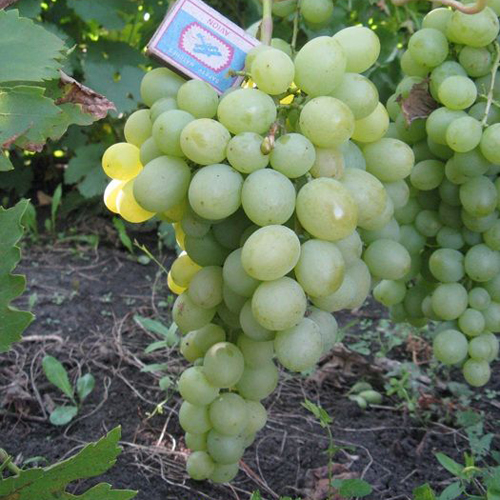
Our hero belongs to varieties of early-middle ripening period. In the conditions of the Lower Don region, where he comes from, harvesting can begin in the second half of August. The growing season from the time of budding in spring, until the onset of removable maturity of the fruit, is usually 125-135 days. During this time, 2600-2700 ° C of the sum of active temperatures is enough for him, which indicates the possibility of full-fledged ripening of the crop grown not only in the south, but also in a number of areas considered unconventional for viticulture. In particular, amateurs without any problems cultivate Bogatianovsky in the Central Black Earth zone of the Russian Federation and in the north of Ukraine, annually receiving conditioned ripe grapes. The bushes, however, do not differ in high frost resistance, withstanding cold only up to -23 ° C. However, plants grown with warming of their aboveground parts for the winter can easily endure a much more serious cold.
The yield of our hero is high - more than 130 kg / ha in industrial plantings, and up to 25 kilograms per bush in amateur plantings with high-quality care and good agricultural technology. The variety is rather fast-growing - the entry into fruiting occurs early, and by the fourth year the plants reach their full productivity. Their fruiting coefficient is 1.1-1.4, and, given the large size of the bunches, there are prerequisites for overloading the bushes with crops. This problem can manifest itself in a decrease in the vigor of growth of grape shoots, a deterioration in the sugar content of berries, and the appearance of a watery pulp. Ignoring such symptoms, the grower runs the risk of seriously weakening the vital energy of plants and impairing their frost resistance, which can ultimately lead to the most dire consequences.
Bogatyanovsky's ability to continue hanging on the vine for a long time after ripening is controversial. On the one hand, the lack of a tendency to crack berries in the event of rainy weather speaks in its favor. Even a sharp change in soil moisture does not lead to significant damage to the integrity of the fruit.
However, the disadvantage of the variety is a problem of a different kind: in dry, hot conditions, ripe grapes can begin to lose moisture and become rainy. This harms the marketability of the crop no less than cracking, and therefore farmers try to harvest the grapes on time, especially in the sultry sunny south. Wasps can also cause some damage, and therefore protecting the bunches from these insects will definitely not be superfluous.
Agrotechnical features
The economic characteristics of the variety are assessed as good, and its cultivation will not be associated with significant difficulties.
Planting is carried out in compliance with standard culture conditions. Avoid placing the vineyard on cold slopes and lowlands, where it is exposed to a significant risk of damage by late spring frosts. Excessive dampness, as well as a high level of groundwater, have a depressing effect on grapes, and therefore such areas are also not used for cultivation.
Bogatyanovskiy has an excellent ability to root cuttings, and can grow well in a self-rooted culture in areas free from root phylloxera. But in those areas where the soil pest has settled, grafted seedlings are planted, in which phylloxera-resistant interspecific hybrids are used as rootstocks.
The bushes that have entered fruiting must be subjected to annual yield rationing, which usually takes place in three stages. During spring pruning, the plants are loaded with 30−35 eyes, shortening the fruit arrows to 8−10 buds. After the start of the growth of shoots, those of them that turn out to be weak and sterile are removed. And, finally, before flowering, on each productive shoot of grapes, extra inflorescences are removed, keeping only one, the largest.
Bogatyanovsky is moderately affected by fungal diseases, possessing a certain resistance to the most harmful of them (mildew - about 3 points, and about 3.5 points to powdery mildew). In this regard, the number of chemical treatments of a variety usually does not exceed three or four per season.
